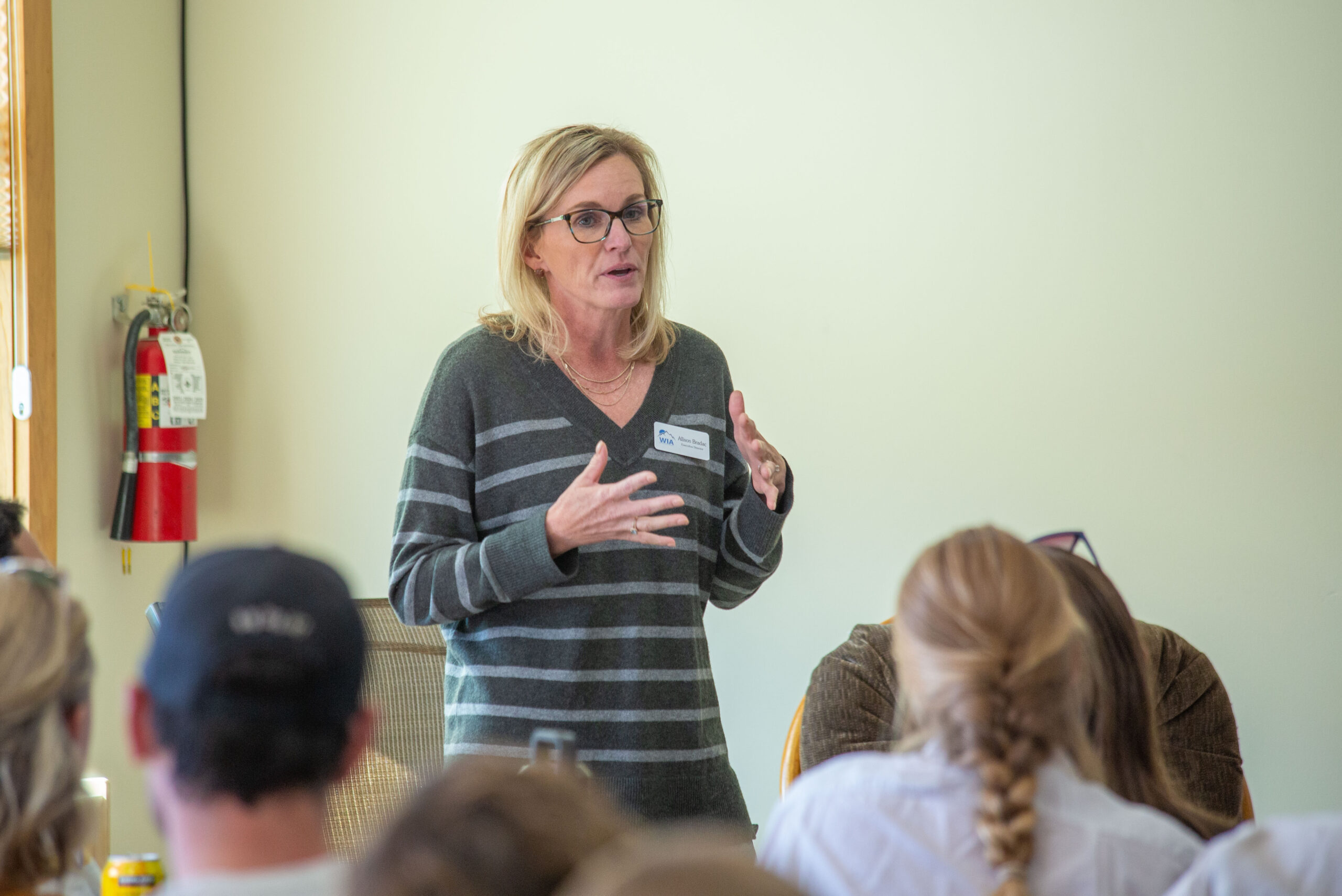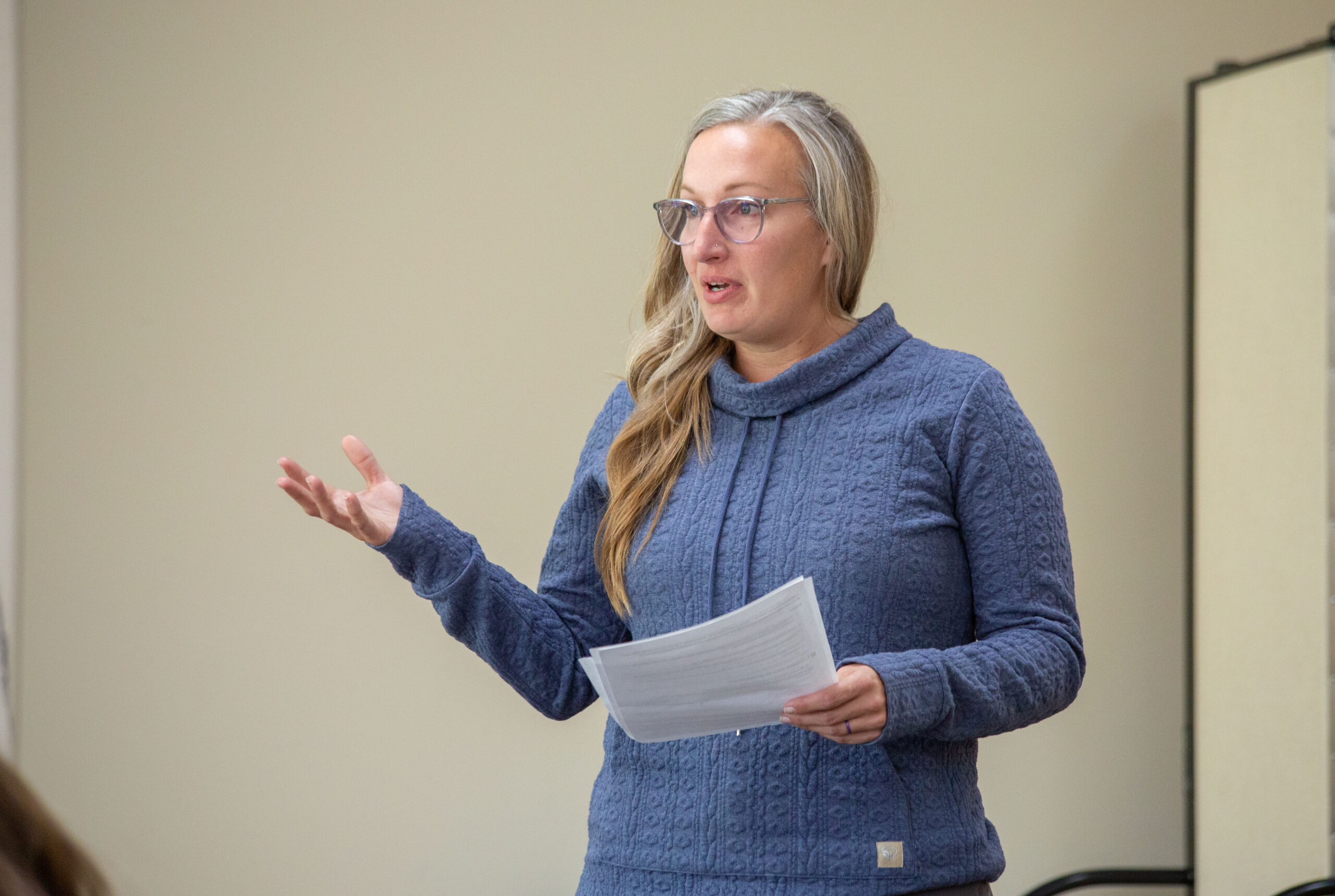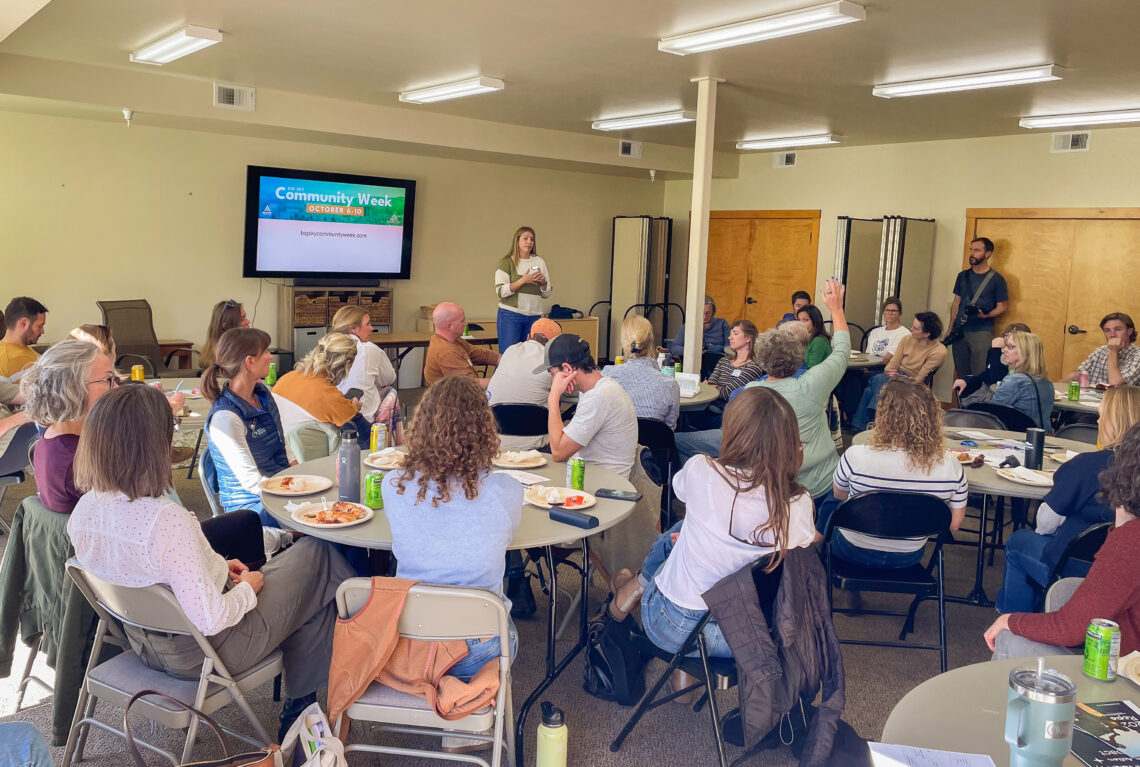Coordinating Council of Big Sky highlights ongoing efforts to fund local health, wellness services
By Jack Reaney SENIOR EDITOR
While the passage of Senate Bill 260 felt like a major win for proponents of creating a Big Sky Wellness District, local leaders emphasized that it’s just the beginning.
“It did not automatically create a new hospital district, it did not automatically withdraw Big Sky from the Madison Valley Hospital District,” explained Jackie Haines, director of economic and strategic development for the Big Sky Resort Area District at an Oct. 9 discussion at the Pizza with a Purpose event for Big Sky Community Week. Haines clarified that SB 260 shifted power to resident voters, allowing them to decide whether they’d like to withdraw from a hospital or school district. “It created a new process.”
The process unfolds as leaders pursue 300 signatures from qualified Gallatin County petitioners by Dec. 1, which would put creation of the wellness district on the May 2026 ballot for Big Sky’s Gallatin County voters.
Madison County petitioners are one step ahead: the original “failed” 2023 petition will be accepted, and the referendum on district creation will be on those Big Sky voters’ May 2026 ballots—the Big Sky Wellness District will be formed separately in both counties, with plans to eventually join through an interlocal agreement.
“We’ve built the infrastructure for recreation, but not necessarily for recovery or sustainability.”
Sarah Gaither, Big Sky Community Food Bank
Haines announced the current tally: the Gallatin County petition has 367 signatures, but only 220 are valid—the Big Sky Wellness Coalition is aiming to reach 400 petition signatures as an extra buffer for invalid names.
More than six weeks remain to collect another 80 valid names.
“We got time, but we can’t slack,” Haines said.
Fundamentals, property tax impacts
If created successfully, the Big Sky Wellness District would open a dedicated funding stream for health and wellness services such as hospital services and equipment, mental health resources, substance use counseling, and potentially ambulance services among other local needs.
From the Madison County side alone, the district would collect $1 million in its first year, and gradually more every following year during the eight-year agreement with the Madison Valley Hospital District.
“Imagine $1 million of dedicated funding to the food bank, to Be Well [Big Sky], to WIA, to the hospital—that’s no chump change,” Haines said.

Any dollars collected by the wellness district in Madison County must be allocated within the district, its borders confined to Madison County—similarly, the Gallatin County wellness district can fund local services within Gallatin County. Combined, the wellness districts would alleviate funding pressure on the Big Sky Resort Area District, allowing BSRAD to focus on funding other important infrastructure, government services and nonprofit initiatives.
“It would significantly, positively impact the funding gap that we face every year,” said Daniel Bierschwale, BSRAD executive director. Currently, BSRAD allocates hundreds of thousands of dollars every year for health and wellness services.
Funds could be collected and distributed as soon as fall of 2026, if either or both wellness districts are created by Big Sky voters in May 2026.
Potential property tax impacts depend on which county residents live, and details will unfold over time as the elected wellness district board members make decisions. However, voter approval is required to assess any additional mills beyond three—which equates to roughly $20 per year for a $1 million home.
In Gallatin County, where Big Sky property owners are currently not a member of any hospital district, taxes will rise by at least three mills.
In Madison County, the hospital district tax may decrease slightly, or stay the same at the existing nine mills levied by the Madison Valley Hospital District.
Leaders say property tax impacts will not be overwhelming, but the priority now is to create the districts.
“We’re moving this to an election,” Bierschwale said. “You all remember the Livable Big Sky campaign and how much of a push that was… we’re going to need everyone’s help in this room with voter education… helping to really demonstrate the need and commitment from the community.”
Local leaders express wellness needs
Allison Bradac, executive director of Wellness in Action, offered some of Montana’s unfortunate mental health statistics to justify the importance of a wellness district. Montana ranks 49th in the nation in mental health, measured by diagnoses of anxiety and depression, and suicide rates, she explained.
“It’s not something that we love to talk about, but we also can really talk about the hope in this community and how partners are really coming together to make change, improve services,” Bradac said. “… Everybody seems to be listening and caring about mental health.”
Bradac noted that WIA is working with the Katz Amsterdam Foundation, a collection of Mountain West resort ski towns that all face similar mental health challenges.


Shannon Steele, director of Be Well Big Sky, explained how a local coalition, originally focused on behavioral health starting in 2020, expanded to include more dimensions of wellness beyond mental and behavioral health.
“It’s all connected: physical, emotional, intellectual, social, spiritual, occupational, environmental and financial [wellness],” Steele said.
She said Big Sky’s multi-year wellness district conversation has been a powerful exercise in thoughtfully creating a world that residents want to live in.
“It’s been really inspiring how many local providers, partners and residents continue to say ‘yes’ to this work,” Steele said.
Bozeman Health representative Emily Voorheis pointed out an exciting milestone: the Big Sky Medical Center will celebrate 10 years of 24/7 emergency care in December 2025.
In 2024, the clinic provided 6,074 primary care visits, 527 MRIs and 2,450 lab tests, and filled 40,113 prescriptions, mostly from non-established patients during peak tourism months. The clinic employed 42 staff members, and continues to expand its local offerings.
Sarah Gaither, director and operations manager of the Big Sky Community Food Bank, said many of Big Sky’s workforce are on the brink of needing to leave the community, and may face barriers to getting the help they need.
“The social service gaps that we are seeing… we don’t have a centralized hub for social services. If somebody needs help with food, housing, medical bills, child care, they have to go to five or six different nonprofits all over town,” Gaither said.
She cited a Bozeman Health Community Needs Assessment, which revealed 50% of Big Sky respondents said they had difficulty buying fresh fruits and vegetables at affordable prices, and 25% worried about having enough food to eat.
While most hospital districts focus on traditional health care, the Big Sky Wellness Coalition aims for Big Sky’s district to take a more holistic approach.
“We’ve built the infrastructure for recreation, but not necessarily for recovery or sustainability,” Gaither said.













